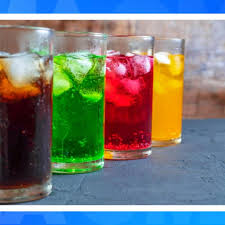
Food dyes have long been a controversial topic in sodas and other beverages due to concerns about their potential health risks. These synthetic color additives enhance the visual appeal of foods and drinks, making them more attractive to consumers. However, their safety and long-term effects remain a subject of debate among researchers, health experts, and the public.
The most commonly used food dyes in beverages include Red 40, Yellow 5, Yellow 6, and Blue 1. Derived from petroleum or coal tar, these dyes undergo regulatory testing before being approved for consumption by agencies such as the U.S. Food and Drug Administration (FDA). While deemed safe within specified limits, concerns persist about their potential side effects, particularly with long-term exposure or high consumption.
Critics argue that synthetic food dyes may have adverse effects, especially in sensitive individuals and children. Some studies suggest a possible link between artificial dyes and behavioral issues, including hyperactivity, attention difficulties, and the exacerbation of ADHD symptoms. However, scientific findings remain inconclusive, with some research supporting these claims and others finding no significant impact. As a precaution, the United Kingdom requires warning labels on foods containing certain artificial dyes, while the European Union promotes the use of natural alternatives (Scheer .
Beyond behavioral concerns, artificial food dyes have also been linked to allergic reactions and sensitivities in some individuals. Symptoms can range from skin rashes and digestive discomfort to respiratory issues. Certain dyes, such as Red 40 and Yellow 5, have been reported to trigger mild to moderate allergic responses, making it crucial for sensitive individuals to check ingredient labels. Additionally, some studies suggest potential links between artificial dyes and other health concerns, including migraines, inflammation, and, in rare cases, possible carcinogenic effects, though evidence remains limited. Studies have reported that certain dyes, such as Red 40 and Yellow 5, may trigger mild to moderate allergic responses, particularly in individuals with existing sensitivities (FDA, 2021; Kobylewski & Jacobson, 2012). As a result, organizations like the Center for Science in the Public Interest (CSPI) have called for stronger regulations and clearer labeling of food dyes.
Additionally, emerging research has explored potential associations between artificial dyes and other health concerns, including migraines, inflammation, and, in rare cases, possible carcinogenic effects. Some studies suggest that certain synthetic dyes may contribute to oxidative stress and DNA damage, which could theoretically increase cancer risk (He et al., 2020). The International Agency for Research on Cancer (IARC) has classified some dye components as “possible human carcinogens,” though the overall evidence remains inconclusive (IARC, 2018).
To reduce exposure to artificial food dyes in beverages, consumers can opt for products made with natural colorants or avoid added dyes altogether. Many brands now offer drinks colored with plant-based ingredients such as beet juice, turmeric, spirulina, and annatto, which provide vibrant hues without synthetic additives (Healthline, 2023). The European Food Safety Authority (EFSA) has also encouraged the use of natural alternatives, and some European countries have banned or required warning labels on foods containing specific synthetic dyes (EFSA, 2021).
Reading ingredient labels and choosing beverages made with natural ingredients can support healthier dietary choices. Additionally, preparing homemade drinks—such as freshly squeezed juices, herbal teas, or infused water—offers a dye-free alternative while also providing additional nutritional benefits.
A diet rich in whole, unprocessed foods can help minimize the intake of synthetic additives, including artificial dyes. By reducing reliance on processed beverages, individuals can also lower their consumption of excess sugar, artificial sweeteners, and other potentially harmful chemicals commonly found in sodas and energy drinks (WHO, 2022).
To reduce exposure to artificial food dyes in beverages, consumers can opt for products made with natural colorants or avoid added dyes altogether. Many brands now offer drinks colored with plant-based ingredients such as beet juice, turmeric, spirulina, and annatto, which provide vibrant hues without synthetic additives. Reading product labels and choosing beverages with natural ingredients can support healthier choices. Additionally, preparing homemade drinks—such as freshly squeezed juices, herbal teas, or infused water—offers a dye-free alternative with added nutritional benefits.
A diet rich in whole, unprocessed foods can help minimize the intake of synthetic additives, including artificial dyes. By reducing reliance on processed beverages, individuals can also lower their consumption of excess sugar, artificial sweeteners, and other potentially harmful chemicals commonly found in sodas and energy drinks.
As discussions on food dyes continue, nutritionists and public health advocates emphasize the need for further research on their long-term effects. Growing consumer awareness has increased demand for transparency from food manufacturers and safer, more natural alternatives. While the debate over artificial dyes’ health risks persists, opting for minimally processed, naturally colored beverages is a proactive step toward overall well-being.
By: Dr. Bhawana Asnani.
Happy to see Reviews, Additions, Suggestions and Comments, further.
